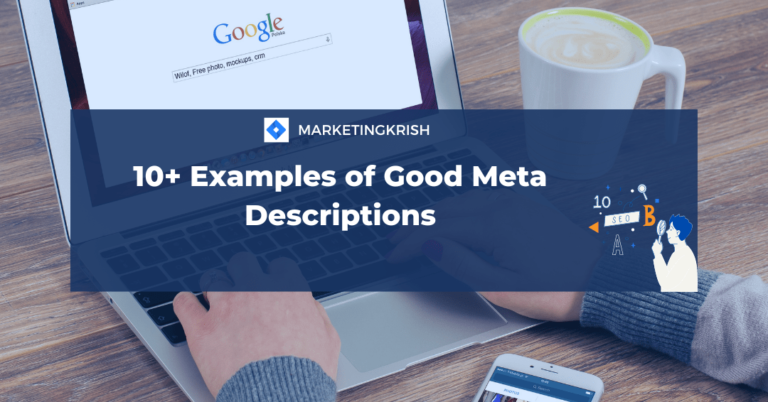Keyword Golden Ratio: The Ultimate Guide to Rank Any Keywords

Are you struggling to rank your keywords higher in search engine results pages (SERPs)?
Look no further! In this comprehensive guide, we will delve into the powerful technique known as the Keyword Golden Ratio (KGR).
With the keyword golden ratio, you can enhance your keyword research strategy and improve your chances of ranking for valuable search terms.

Source – https://moz.com/blog/the-3-tier-keyword-conversion-model
In this article, we will explore why the Keyword Golden Ratio is so effective, compare it with other keyword research techniques, and analyze real-life case studies that demonstrate its positive impact on keyword ranking.
In today’s digital world, where search engine rankings can make or break a website’s success, keyword optimization plays a pivotal role. Keyword Optimization doesn’t only mean placing the keywords in content, it includes other elements as well like what you do after doing keyword research (my 7-step process that I follow every time I do keywords research)
To stand out in the vast online space, understanding and implementing effective SEO strategies are crucial.
One such strategy that has gained significant attention is the Keyword Golden Ratio (KGR).
Importance of Keyword Optimization for Search Engine Ranking:
Before we dive into the specifics of the Keyword Golden Ratio, it is essential to grasp the significance of keyword optimization to increase Google’s ranking for keywords.
Search engines rely on keywords to understand the content and relevance of a web page.
By strategically incorporating relevant keywords throughout your website, you increase the chances of ranking higher in search engine results pages (SERPs).
Improved rankings lead to increased organic traffic, visibility, and ultimately, conversions.
#Pro Tip – Use Free AI Tool to Creator Content (42 Best AI Tools 2023)
What is the Keyword Golden Ratio (KGR)?
The Keyword Golden Ratio (KGR) is a formulaic approach to identifying low-competition keywords that have the potential to rank quickly on search engines.
Developed by Doug Cunnington, an SEO expert, the KGR helps you target keywords that strike the right balance between search volume and competition. By focusing on KGR, you can improve your chances of ranking higher in SERPs.
Definition of the Keyword Golden Ratio:
The Keyword Golden Ratio is calculated by dividing the number of Google search results with the monthly search volume of a particular keyword. The resulting number indicates the competitiveness of the keyword. Ideally, a KGR value less than 0.25 is considered favorable, indicating a high chance of ranking quickly for that keyword.
How the Keyword Golden Ratio works and its benefits:
The KGR method allows you to discover long-tail keywords with lower competition, making it easier for your content to rank on search engines and these are things that SEO content creators should know.
By focusing on these less competitive keywords, you can bypass heavy competition and rank higher, even if your website is relatively new or lacks a high domain authority.
This strategy is particularly useful for niche websites, bloggers, and content creators looking to generate organic traffic without extensive resources.
#Pro Tip – Use 17+ Best Free Website Traffic Checkers Tools
The Formula for Calculating the Keyword Golden Ratio:
To calculate the KGR for a keyword, you need to divide the number of search results (in quotation marks) by the average monthly search volume (in the keyword planner). The resulting value will determine whether the keyword falls within the keyword golden ratio or not.
Pro Tip – Try SEMrush for FREE (you can sign-up and can use it for free with limits OR Can try the free trials for 14 days
Examples of successful implementation of the Keyword Golden Ratio:
Let’s look at a few examples to understand the successful implementation of KGR better:
Example 1:
Keyword: “Best vegan restaurants in New York City”
Search Volume: 1000
- Search Results: 150
KGR Calculation: 150 / 1000 = 0.15
Based on the KGR calculation, this keyword falls well within the golden ratio, indicating a high likelihood of ranking quickly.
Example 2:
Keyword: “Healthy gluten-free dinner recipes”
Search Volume: 5000
- Search Results: 500
KGR Calculation: 500 / 5000 = 0.1
Once again, this keyword demonstrates a promising KGR value, making it an excellent target for your content.
You can also add LSI keywords (Latent Semantic Indexing) to further narrow down the content infront of Google eye
LSI Keywords and Other Relevant Keywords:
- Gluten-free meal ideas
- Quick and healthy dinner options
- Top vegan restaurants in NYC
- Delicious plant-based dining in New York
Utilizing the Keyword Golden Ratio (KGR) to Rank Keywords:
- Keyword Research: Begin by conducting thorough keyword research using reliable tools such as Google Keyword Planner, SEMrush, or Ahrefs.
- Look for long-tail keywords that are relevant to your content and have a decent search volume.
LSI keywords are 3 – 4 words keywords
Pro Tip – Try SEMrush for FREE (you can sign-up and can use it for free with limits OR Can try the free trials for 14 days
Example LSI Keywords:
- Beginner-friendly hiking boots
- Weight loss smoothie recipes
- Choosing the right hiking boots
- KGR Calculation: Once you have a list of potential keywords, calculate the KGR for each of them. Remember, a KGR of 0.25 or below indicates a keyword with low competition.
Why is the Keyword Golden Ratio effective?
The Keyword Golden Ratio is a method that helps you identify low-competition keywords with a decent search volume.
By leveraging this ratio, you can optimize your content to rank higher in search engine results.
Here are a few reasons why the KGR technique is highly effective:
a) Lower competition: The KGR allows you to target long-tail keywords that have less competition. With fewer websites competing for these specific terms, you have a greater chance of ranking higher in SERPs.
b) Improved visibility: By focusing on less competitive keywords, you increase your visibility to a more targeted audience. This can lead to higher click-through rates (CTR) and better engagement on your website.
c) Increased organic traffic: As you rank higher for multiple low-competition keywords, the cumulative effect can lead to a significant boost in organic traffic to your website.
- Discussion on the rationale behind the effectiveness of KGR:
The KGR technique is based on the idea that targeting long-tail keywords with low competition allows you to bypass the fierce competition for highly competitive keywords.
By targeting these underserved search terms, you have a higher chance of ranking on the first page of SERPs, thus attracting relevant organic traffic to your website.
How to Identify Keyword Golden Ratio Keywords:
The Keyword Golden Ratio is a method that helps you identify keywords with low competition and a higher likelihood of ranking on search engine results pages (SERPs).
Here’s a step-by-step guide on how to identify potential KGR keywords:
a. Start with a broad topic: Begin by selecting a broad topic related to your website or niche. For example, if you have a fitness blog, your broad topic could be “weight loss.”
b. Generate a list of seed keywords: Use keyword research tools like Google Keyword Planner, SEMrush, or Ahrefs to generate a list of seed keywords related to your broad topic. For our fitness blog example, seed keywords could be “how to lose weight,” “weight loss tips,” “effective weight loss methods,” and so on.
c. Calculate the KGR formula: The KGR formula is the number of Google search results with the keyword phrase in the title divided by the monthly search volume. Aim for a KGR score of less than 0.25 for a higher chance of ranking. For instance, if the search volume is 100 and there are 10 results with the keyword phrase in the title, the KGR would be 10/100 = 0.1.
d. Identify potential KGR keywords: Analyze the search results for each seed keyword using search engines like Google. Look for keyword phrases with a low number of search results in the title and a decent search volume. These are the potential KGR keywords you should target.
Keyword Research Tools and Their Importance:
- Keyword research tools play a vital role in the KGR process. They help you discover relevant keywords, analyze their search volume, and assess the level of competition. Here are some popular keyword research tools:
a. Google Keyword Planner: This free tool by Google provides valuable insights into search volume and keyword ideas based on your seed keywords.
b. SEMrush: A comprehensive SEO suite that offers keyword research, competitor analysis, and other valuable features to enhance your keyword strategy.
c. Ahrefs: A powerful tool for keyword research, backlink analysis, and competitor research, enabling you to uncover untapped keywords and potential KGR opportunities.
#Pro Reminder- Use Free AI Tool to Creator Content (42 Best AI Tools 2023)
Determining Keyword Search Volume and Competition:
To make informed decisions, it’s important to evaluate the search volume and competition of your target keywords.
Keyword research tools, like the ones mentioned earlier, provide search volume data that can guide your keyword selection process.
Additionally, analyzing the top-ranking pages for a specific keyword will give you an idea of the competition you’ll face.
Identifying Long-Tail Keywords with Low Competition and Decent Search Volume:
Long-tail keywords are more specific and often have lower competition, making them ideal for KGR targeting.
Consider using modifiers like “best,” “top,” “guide,” “review,” or location-specific terms to create long-tail keywords.
For example, instead of targeting the highly competitive keyword “weight loss,” you could focus on long-tail keywords like “best weight loss tips for beginners” or “effective weight loss methods for women over 40.”
Relevant Examples:
Seed Keyword: “best vegan protein powder”
Search Volume: 500
Google Results with Phrase in Title: 5
- KGR: 5/500 = 0.01 (Great potential KGR keyword)
Seed Keyword: “healthy breakfast recipes”
Search Volume: 1,000
Google Results with Phrase in Title: 50
- KGR: 50/1000 = 0.05 (Promising KGR keyword)
Analyzing Keyword Golden Ratio Keyword Potential:
Relevance to the website or content:
When assessing the potential of KGR keywords, it’s crucial to consider their relevance to your website or content.
You want to ensure that the keywords align with your target audience’s interests and the overall theme of your website.
By targeting keywords that are closely related to your niche, you can attract visitors who are more likely to engage with your content and convert into customers.
For example, if your website is about fitness, you may want to focus on KGR keywords such as “best home workout equipment” or “healthy meal prep ideas.”
These keywords directly relate to your website’s content, making them highly relevant and valuable for your target audience.
User intent and conversion potential:
User intent plays a vital role in keyword research. Understanding what users are searching for and their underlying motives can help you choose KGR keywords with higher conversion potential.
Look for keywords that align with specific user intents, such as informational, navigational, or transactional.
For instance, if you run an e-commerce store selling camping gear, targeting KGR keywords like “best camping tents for families” or “affordable camping accessories” can attract users ready to purchase. These keywords have transactional intent and can increase your chances of driving valuable leads and conversions.
Creating Content Optimized for Keyword Golden Ratio Keywords
Once you have found a list of keywords with a good KGR, you need to create content that is optimized for those keywords.
Here are some techniques for incorporating KGR keywords into content effectively:
- On-page optimization strategies: These include using the keyword in the title tag, meta description, headings, and alt text. You should also try to use the keyword naturally throughout the content, but avoid keyword stuffing.
- Writing high-quality and engaging content around KGR keywords: This is essential for attracting and retaining visitors. Your content should be well-written, informative, and relevant to the keyword. It should also be engaging and interesting, so that visitors will want to read it all the way through.
- Proper keyword placement and density: You should use the keyword in the title tag, meta description, and headings. You should also use the keyword throughout the content, but avoid keyword stuffing. A good keyword density is around 2-3%.
- Importance of meta tags, headings, and alt text: Meta tags, headings, and alt text are all important for on-page optimization. The title tag should be clear and concise, and it should include the keyword. The meta description should be informative and engaging, and it should also include the keyword. Headings should be used to break up the content and make it easier to read. Alt text should be used for images, and it should also include the keyword.
Implementing KGR in Content Strategy:
To leverage the full potential of KGR, it’s important to integrate it into your broader content strategy. Here are some essential guidelines to follow:
Keyword Mapping and Content Planning:
- Begin by identifying relevant KGR keywords that align with your niche. Conduct thorough research using tools like Google Keyword Planner or SEMrush. Map these keywords to specific topics and create a content plan that targets these areas.
Example: Let’s say you have a blog about healthy recipes. After performing keyword research, you discover the keyword “low-calorie vegan dessert recipes” has a promising KGR. You can plan content around this keyword to attract organic traffic.
Creating Pillar Content and Supporting Articles:
- Develop comprehensive pillar content that covers a broad topic related to your niche. This content should be optimized for KGR keywords. Additionally, create supporting articles that dive deeper into specific subtopics within the pillar content.
Example: In our healthy recipes blog, the pillar content could be a guide to vegan desserts. Supporting articles could focus on low-calorie vegan desserts, gluten-free vegan desserts, or even vegan desserts for special occasions.
Internal Linking and Content Promotion Strategies:
- Leverage internal linking to establish a strong connection between your pillar content and supporting articles. This helps search engines understand the relevance and depth of your content. Additionally, promote your articles through social media, email newsletters, and collaborations to expand their reach.
Example: Within your pillar content on vegan desserts, include internal links to the supporting articles on low-calorie vegan desserts, thus guiding readers to explore related content.
Monitoring and Evaluating Keyword Performance:
- Regularly monitor the performance of your KGR keywords using tools like Google Analytics or Ahrefs. Analyze the organic traffic, rankings, and conversions to gauge the success of your content strategy. Make necessary adjustments to optimize your results further.
Example: Keep track of the organic traffic generated by your article on low-calorie vegan desserts and monitor the increase in keyword rankings over time.
Common Mistakes to Avoid with KGR:
To ensure optimal results with KGR, steer clear of these common pitfalls:
Tips to Avoid Keyword Stuffing and Over-Optimization:
- While KGR focuses on low competition, it’s essential to maintain a balanced approach. Avoid stuffing your content with excessive keywords, as it can negatively impact readability and user experience. Aim for natural and organic integration of KGR keywords within your content.
Balancing KGR with User Experience and Content Quality:
- Remember that KGR is a tool to help you rank higher, but it should not compromise the quality of your content or user experience. Strive to create valuable, informative, and engaging content that resonates with your target audience.
FAQs on Keyword Golden Ratio
While KGR increases your chances of ranking well, it doesn’t guarantee top rankings. Other factors like content quality, user experience, backlinks, and overall website authority also play a significant role in search engine rankings.
KGR is calculated by dividing the number of search results for a specific keyword by the keyword’s monthly search volume. A KGR below 0.25 is considered a good opportunity for ranking.
Yes, KGR can be used for any type of content, including blog posts, articles, product descriptions, and more. It helps you optimize your content by targeting specific keywords that align with your niche.
Not necessarily. While KGR keywords often include long-tail variations, they can also be shorter phrases or specific terms. The key is to find keywords that have low competition and a decent search volume.
While KGR keywords are valuable for SEO, it’s important to have a balanced approach. Include a mix of KGR keywords and other relevant keywords to ensure your content covers a broad range of topics and provides value to your audience.
There is no fixed rule for keyword density, but it’s generally recommended to use KGR keywords naturally and strategically throughout your content. Focus on providing valuable information to your readers rather than keyword stuffing.
Yes, you can use KGR to optimize existing content. Identify relevant KGR keywords related to your content and make necessary adjustments to incorporate them naturally. This can help improve the visibility of your existing pages.
Yes, several SEO tools offer KGR analysis capabilities. Tools like Keyword Surfer, KWFinder, and Long Tail Pro provide insights into search volume, competition, and KGR calculations to help you identify valuable keywords.
Conclusion:
By implementing the Keyword Golden Ratio effectively, you can unlock the potential to rank higher for valuable keywords with low competition. Integrating KGR into your content strategy, utilizing advanced techniques and tools, and avoiding common mistakes will set you on the path to SEO success. Start optimizing your content with KGR today and watch your organic traffic soar. Happy ranking!








helloI like your writing very so much proportion we keep up a correspondence extra approximately your post on AOL I need an expert in this space to unravel my problem May be that is you Taking a look forward to see you
Hii there, thanks for reading.
You can connect with me via mail hari@marketingkrish.com, shoot your queries over there